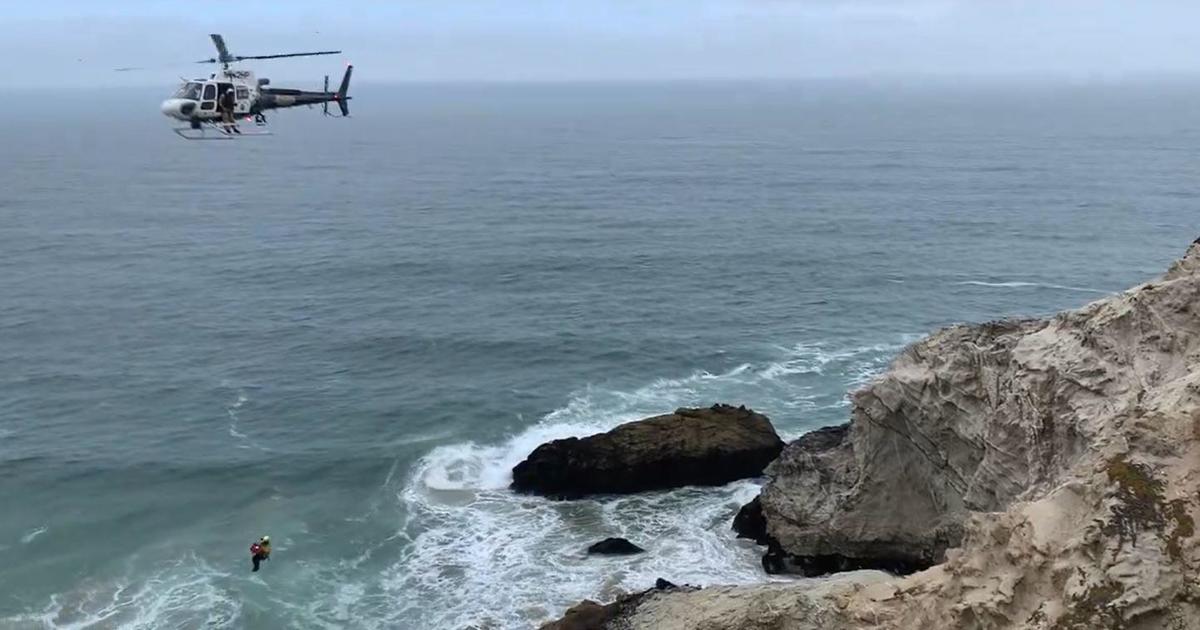Tracking Devices Reveal Mountain Lions Thriving In Santa Cruz Mountains
SANTA CRUZ (CBS SF) -- A trail camera captured a mountain lion leaping a six-foot-tall fence in Santa Cruz -- evidence that mountain lions are thriving in the surrounding area.
The video was captured August 7, 2016, on the 600 block of Graham Hill Road, and it shows a one and half year old juvenile male, weighing 93 pounds lurking around, careful not to make noise on the dried, fallen leaves and brush.
It hesitates, gauges the distance to the top of the wire fence, and then leaps up. It can then be heard scampering out of frame. Upon closer inspection the next day, homeowner John Pierce found parts of the fence were bent and damaged from the weight of the cougar.
Pierce set up the battery operated $150 Moultriecam wildlife camera, earlier this year at his home in Santa Cruz, after one of his animals was killed.
"I'm going to be more cautious at night, and not let my dog roam out there," said Pierce.
It turns out the jumping cougar had just been fitted with a GPS tracking collar and given the designation 77M several weeks ago, making him the newest addition to the UC Santa Cruz Puma Project.
Since the launch of the program in 2008, the collars have become more sophisticated, with longer lasting batteries, and accelerometers that can record a wide range of motion, as well as precise location, and then upload the data via satellite about once a day.
That data has allowed researchers to map out the various territories of the collared mountain lions, which shows the larger, stronger and more dominant males controlling large swaths of open space filled with prey animals, that are away from humans.
In contrast, juveniles like 77M, have tiny, less desirable territories next to human development. The "Puma Tracker" can be seen at http://santacruzpumas.org
"Those young male tend to stay closer to people and as they get older they'll move into the open space areas away from people. From what we've seen so far, he's acting pretty normally," says John Houghtaling, Santa Cruz Puma Project field biologist.
Over the years, Houghtaling says the researchers have noticed patterns of behavior. Mountain lions are crossing Highway 17 at Lexington Reservoir near the spillway, and also at Laurel Curve, where they are often struck and killed by drivers at night.
As a result of the GPS data, various agencies, including Caltrans are working on plans for a wildlife tunnel to help the cougars, and other animals, cross the roadway safely, in order to expand their territory on the eastern side of the highway, that has long been cutoff.
The high tech collars have also revealed what the big cats do in a typical day: sleep during sunlight hours, wake up at dusk, and stay on the move all night long, either hunting or feeding. Finally, researchers say their tracked mountain lions tend to stay about 150 yards away from humans when possible, but that distance increases to about 700 yards when a female has kittens.
"There's a fair chance you've been pretty close to one at some point. It's through trail cameras, and GPS tracking collars that we're getting a glimpse of this. It's probably been going on for a very long time. And we're just now learning about it," says Houghtaling.



